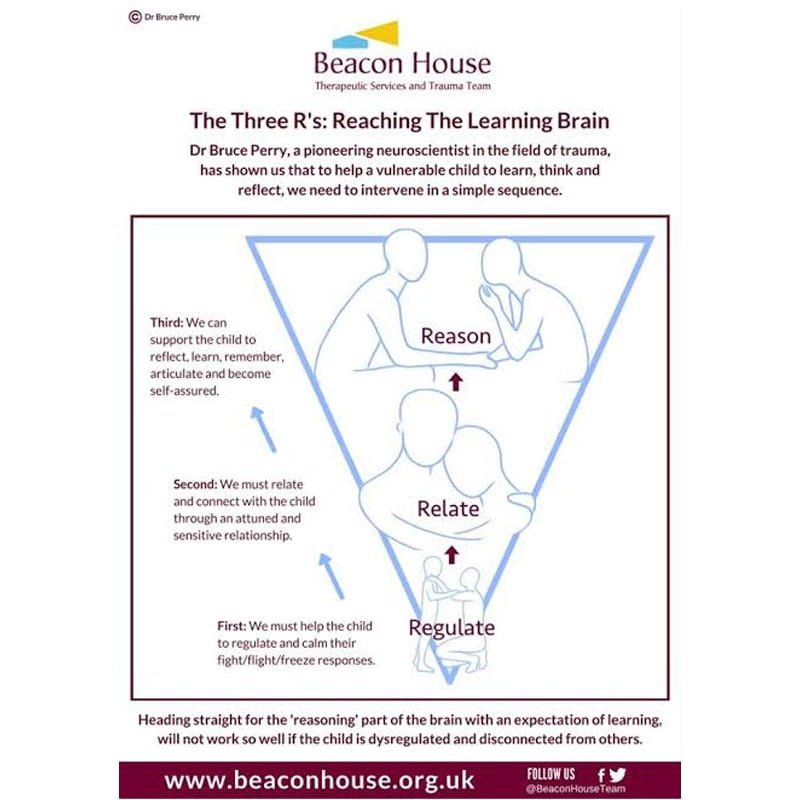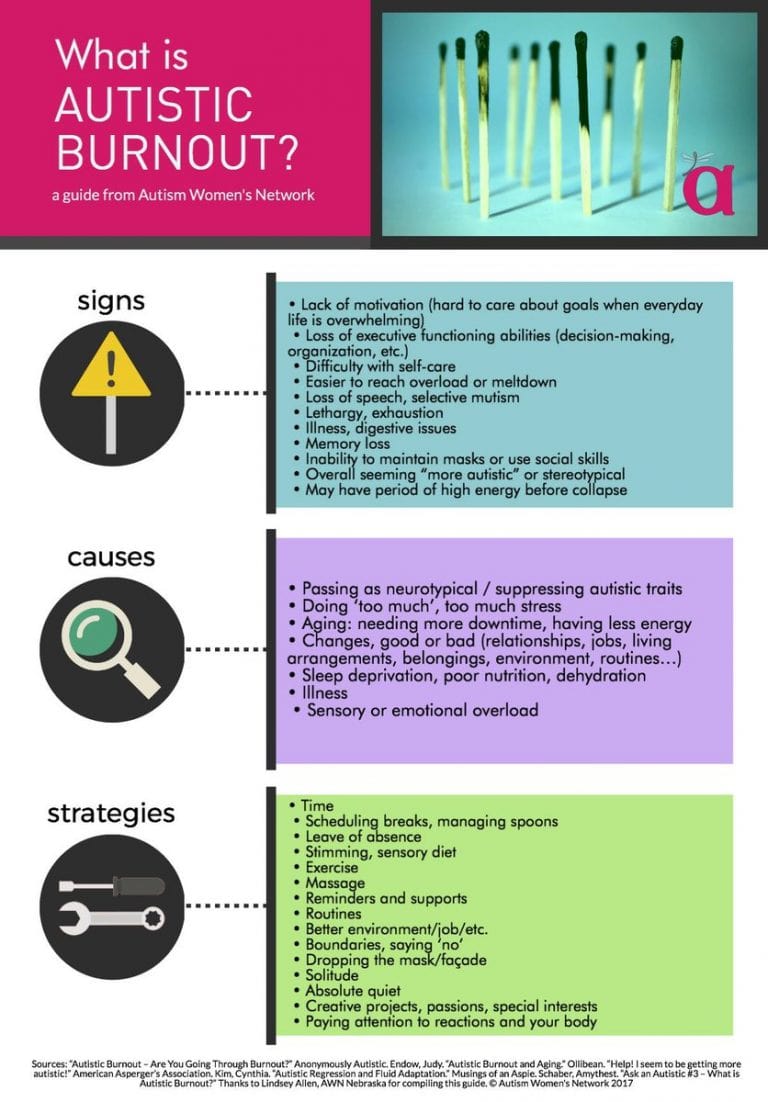Preventing Meltdowns Escalating
If a child is having a meltdown, ignore what the task at hand is and/or what the child has done wrong and calmly remind the child what to do next. It is futile addressing the problem behaviour until the child has come out of the meltdown and is calm and rational (when you are flooded with an emotion, the use of your executive functioning is impaired). Do not constrain the child or remove things that will escalate the meltdown unless they are a danger to one-self or others.
Words are a form of stimulation, and when the child is feeling flooded (with an emotion) and has lost their use of executive functioning you will only escalate the meltdown if you continue to reason with or make demands of the child. Often the child will be requesting things in the midst of a meltdown. Reasoning will not always help. Help the child to regulate and relate to the child (with emotional attunement), before you reason.
Another key point to remember is the child may feel that they have used up all-of their coping responses in their coping repertoire, including seeking help, and may have developed maladaptive thinking about their plight. It is likely something in the bigger picture (that you cannot see in the immediate situation which is presenting as a child reacting inflexibly to your request) that triggered the meltdown (e.g., a hyper sensitivity, transition, social fatigue, Autistic burnout, a situation that they could not understand because their brain works differently etc.).
When you face a situation a child can’t resolve, it helps to calmly ignore the wrong turn (share a sense of calm) and state explicitly with limited words what is expected next, then the child is most likely to comply and calm down in the process. Act like a GPS – When you make the wrong turn in your car, the machine does continue to focus on the wrong turn, but calmly says ‘now turn left at the next intersection’.
Help redirect the child to a quiet place by giving them a sense of purpose (e.g. feed the school chickens, take an important note the principal, help return a book to the library). For example, let’s stand up and go and feed the chickens. The child may try and pull you back into discussing the problem and I would calmly say I definitely need to talk about the fact the you were feeling (…..) , however at the moment I need you to stand up and help me feed the chickens. Once the child is calm and rational, you can help them talk through the problem at hand.
Physical exercise is very effective in reducing physiology and removes the child from the situation so other people are not impacted (skipping to go to do an errand).
Exposures alone with not work with an Autistic Child, they will likely need intervention before they can feel calm and comfortable to engage in an activity that has led to feeling flooded with an emotion in the past. Wait to find more workable options and provide coping skills (a social story of what is expected) at later date when the child is calm and rational. Use the child’s strengths to their advantage – the Autistic brain has a way of falling in love with things and completely focusing on them, leaving anything else behind. While so many people see this as a negative, it can be viewed as a fantastic tool. Encourage the child’s special interests, love of learning, and genuine desire to stick to the rules (once they are understood).


Autistic Burnout
Many Autistic children learn to mask their behaviours to fit in and be accepted by their peers and/or due to an assumption that neurotypical social skills are the only way to succeed in life. Time off without the mask is not only physically and emotionally exhausting, it is particularly adverse for mental health (anxiety, depression), self-perception and self-esteem. Masking can lead to significant social fatigue and an inability to function (described as a need to shut down). Time spent without ‘masking’ and a passage of time to recover, may be needed.
The Distinction between - Promoting Resilience/ Accommodations vs. Doing more Harm than Good
As with any child, if they become controlling of their environment as a way of coping (which is not due to symptoms of Autism Spectrum Disorder) it may be beneficial to continue with an exposure to allow the child to develop skills or strategies so they can manage their emotions when faced with such triggers. For example, all children need to learn to sit with their emotions until they dissipate on their own accord and cope with triggers that are unavoidable for later success socially, emotionally and academically.
Unlike a neurotypical child, repeated exposures to a situation will not always benefit an Autistic child. Repeated negative exposures can do more harm than good. The symptoms of Autism Spectrum Disorder need to be addressed, and developmental gains also need to be considered. The distinction I make about being more flexible is if it is a hypersensitivity that is making the child feel overwhelmed or if they can’t understand or cope with a situation because their brain works differently. In these situations, I address the symptoms of Autism Spectrum Disorder, by providing a therapeutic intervention and/or appropriate accommodations (e.g. a social story to help understand what is expected of them). It is also important to help the child regulate and relate to the child (with emotional attunement) before you reason.
Sometimes people incorrectly assume that repeated forced negative exposures leads to resilience. You can teach a person to repress their emotions and not react (they are no longer disrupting anyone) however what you don’t see is how much you are hurting the Autistic person. They may go home and scream for hours, have nightmares, physical symptoms (eg. Migraines or IBS) exhaustion (not be capable of leaving the house and needing to do nothing except sleep), experience escape ideation (suicidal thoughts, self harm), and/or burn out.
Ultimately we want to empower Autistic individuals to feel comfortable to ask for the accommodations and support they need. Change is a process that requires preparation (considering developmental and therapeutic gains to decide if the child has the resources to cope, a graded exposure approach) and is accompanied by support (accommodations).
In addition to Autistic individuals developing new skills to promote their wellbeing, acceptance and understanding from others is needed. A curious approach that entails a desire to understand and see Autistic people as having equal rights, value and worth is important. Reasonable accommodations do not require lowering performance standards or removing essential functions of the individual’s work.
Use of this site is subject to our Website Terms of Use. The material on this web site does not provide medical advice, diagnosis or treatment.
IP © Dr Kerry Chillemi 2019

